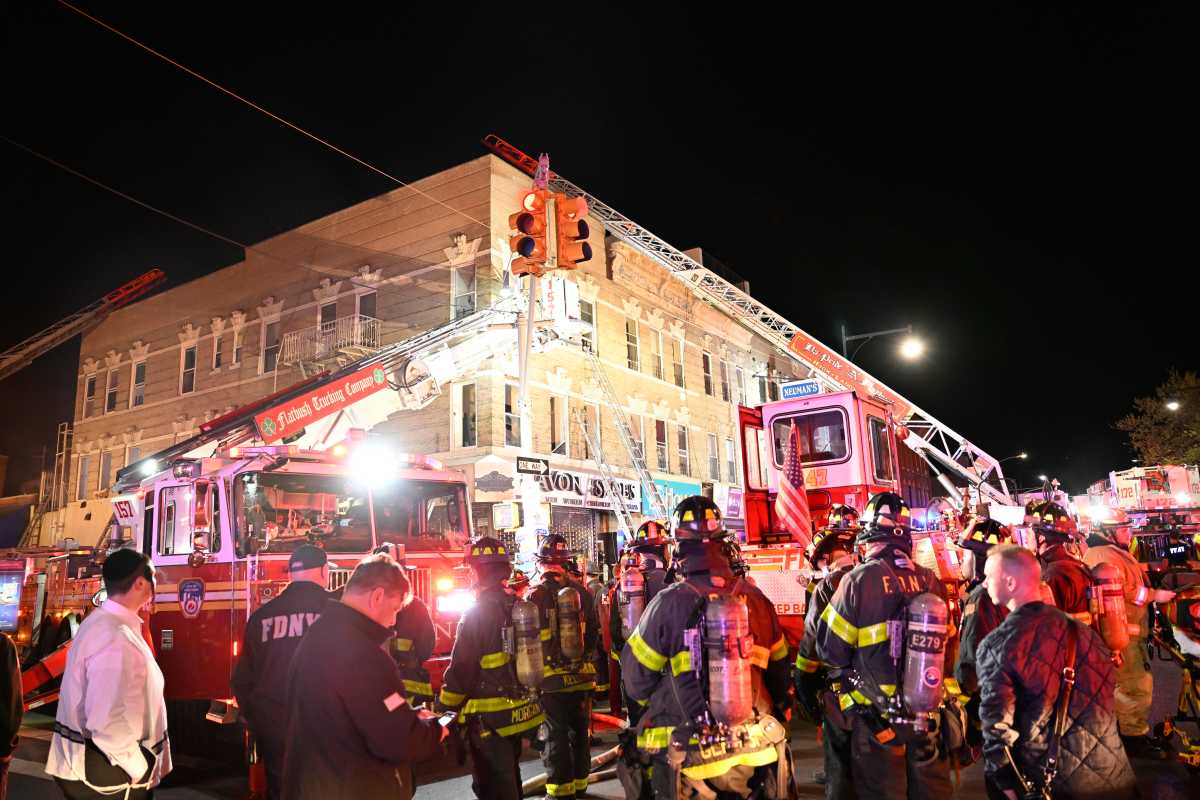As the weather turns colder, health officials and lawmakers are urging New Yorkers to get the flu shot.
Acting Health Commissioner Dr. Oxiris Barbot confirmed this season’s first pediatric flu-related death in the city on Thursday.
There were 80,000 flu deaths across the country last flu season, which runs from October through May, according to the national Centers for Disease Control and Prevention. In New York, there were record-breaking numbers of both laboratory-confirmed influenza cases and hospitalizations.
Scroll down to learn more about the flu and what you can do to avoid getting sick.
Flu basics
The flu is a highly contagious illness mainly spread from person to person. While it can cause mild or severe illness, it can also be deadly.
There are two common types of flu: Influenza A and Influenza B. Within Influenza A, there are subtypes H1 and H3. Under Influenza B there is Victoria or Yamagata. Last season, Influenza A (H3) was the most commonly contracted illness, state Department of Health data shows.
Anyone can get the flu, but young children and older adults are particularly vulnerable.
Flu symptoms include: fever, chills, sore throat, runny or stuff nose, cough, muscle or body aches, headache, tiredness and vomiting or diarrhea, in some cases.
A person who is infected with the flu can be contagious from one day before presenting symptoms to between five and seven days after becoming sick, per the state Health Department.
If diagnosed quickly, the flu can be treated with antiviral drugs, which can reduce how long and how badly a person will get sick. There is no cure for the flu, which is why health officials urge people to get vaccinated as a preventive measure.
Pediatric flu deaths in New York City
Only weeks into the 2018-2019 flu season, the city health department has confirmed its first pediatric flu death. Acting Health Commissioner Dr. Oxiris Barbot declined to provide any other details, citing patient privacy.
Barbot said New York City commonly sees up to eight pediatric flu deaths a season.
Five children, four of whom lived in New York City, died of the flu in New York during the last flu season, according to city and state health officials.
During the 2016-2017 flu season, there were eight pediatric flu deaths in the state, six of which occurred in the city, according to officials.
Flu cases for 2017-2018 season
The last week of May, when flu season ended, was the first time in 23 weeks that the state Health Department categorized influenza activity as local instead of geographically widespread.
Over the course of the entire season, upstate New York had 82,884 lab-confirmed cases of flu, according to the state Health Department. New York City had 45,368 cases of flu, per officials.
The flu season hit its peak around Feb. 17, when over 18,000 new cases were recorded in one week.
Flu vaccine accessibility and effectiveness
The flu shot is available to everyone over the age of 6 months old. Parents and guardians of children between 6 months and 2 years old should see a doctor to get their child vaccinated.
The CDC said vaccines have been updated to better match the viruses that were commonly circulating last flu season, including the Influenza A (H3) that hit New Yorkers hard, though it’s impossible to predict which strain of flu will become most prevalent in any given season.
Tips for avoiding the flu
Aside from getting vaccinated, there are several simple steps people can take to help avoid getting sick.
- Wash your hands often with hot water and soap. Health officials suggest washing your hands for at least 20 seconds to ensure cleanliness.
- Carry (and use) hand sanitizer that is at least 60 percent alcohol.
- Cover your mouth and/or nose with a tissue instead of your hands when you sneeze or cough.
With Lisa L. Colangelo

































